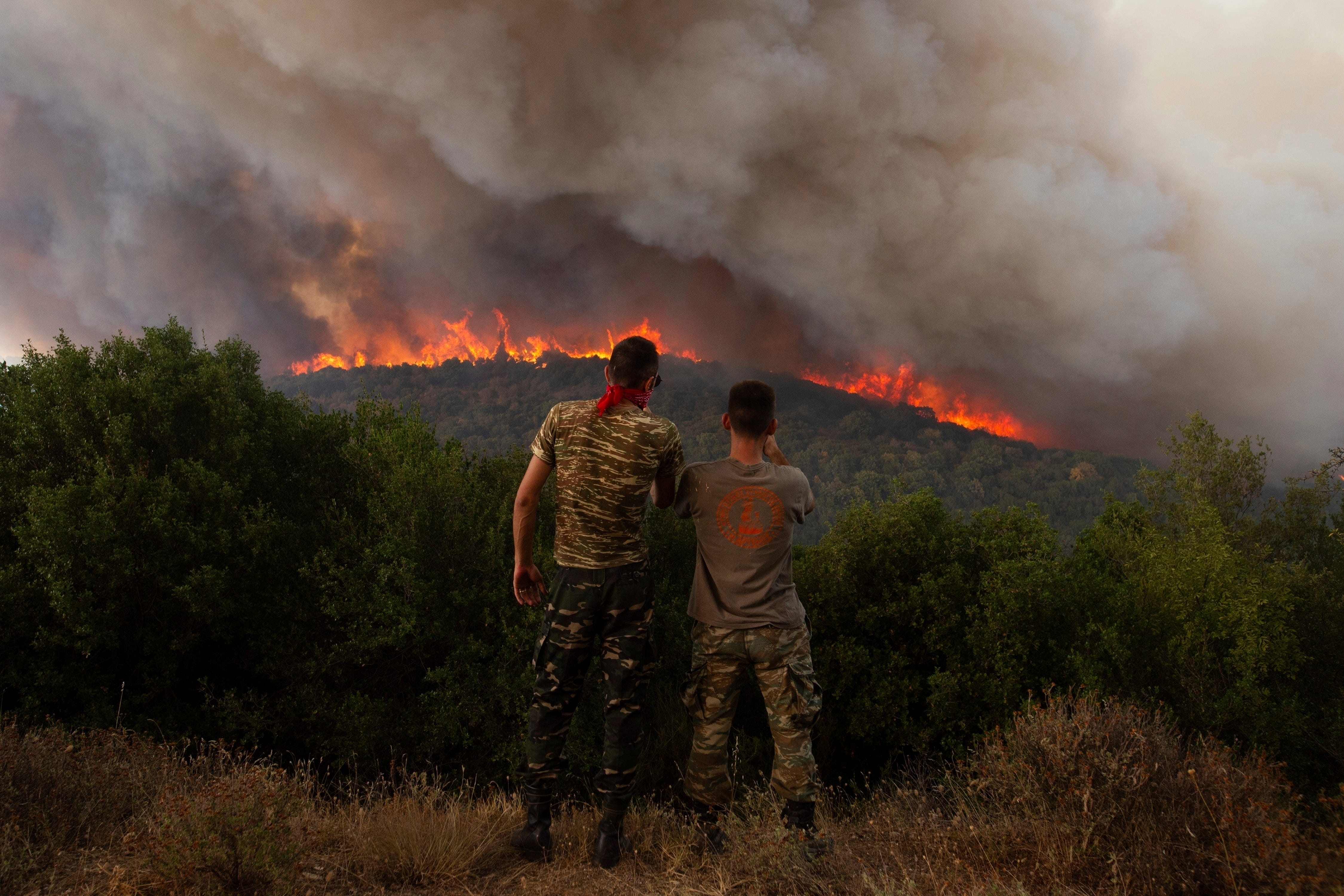September hottest on record by ‘extraordinary amount’, says WMO
It follows record-breaking temperatures in August and July across the globe.

September has smashed the monthly temperature record by “an extraordinary amount”, the World Meteorological Organisation (WMO) has confirmed.
It follows the hottest August and July that saw wildfires and heatwaves tearing not just across the Northern Hemisphere but in South America too, which had temperatures reach around 40C (104F) in winter.
Land and sea temperatures have shocked scientists with 2023 set to be the hottest year on record.
The EU’s Copernicus Climate Change Service (C3S) said last month was the most anomalous month they have seen since they began recording in 1940, measuring an average surface air temperature of 16.83C (62.29F).
This is 0.5C warmer than the previous September record set in 2020 and 1.75C warmer than then pre-industrial average – between 1850-1900.
Europe was 2.51C higher than the 1991-2020 average and 1.1C warmer than September 2020, the previous record.
WMO secretary-general Professor Petteri Taalas said: “Since June, the world has experienced unprecedented heat on land and sea.
“The temperature anomalies are enormous – far bigger than anything we have ever seen in the past. Antarctic winter sea ice extent was the lowest on record for the time of year.
“What is especially worrying is that the warming El Nino event is still developing, and so we can expect these record-breaking temperatures to continue for months, with cascading impacts on our environment and society.”
The average sea surface temperature for last month, excluding the polar regions, was 20.92C (69.65F) – the highest on record for September and the second highest of any month except August 2023.
Antarctic sea ice also remains at a record low for this year having fallen 18% below the average for this time of year.
The extraordinary temperatures are likely a result of climate change pushing up the boundaries with El Nino – a period of warming in the eastern tropical Pacific – adding a further influence, meteorologists said.
The findings come as the UN publishes its global stocktake in which it warned that the world is not on track to meet its Paris Agreement goals of stopping the average global temperature rising 1.5C above pre-industrial levels.
Although the monthly temperature rise in September was 1.75C above, this does not mean the Paris Agreement target has been lost as that is measured over a period of around 20 years.
Scientists have said there is still time to reverse the trend if countries take stronger action on reducing their greenhouse gas emissions.
Samantha Burgess, deputy director of the Copernicus Climate Change Service, said: “The unprecedented temperatures for the time of year observed in September – following a record summer – have broken records by an extraordinary amount.
“This extreme month has pushed 2023 into the dubious honour of first place – on track to be the warmest year and around 1.4C above pre-industrial average temperatures.
“Two months out from Cop28 – the sense of urgency for ambitious climate action has never been more critical.”
Subscribe to Independent Premium to bookmark this article
Want to bookmark your favourite articles and stories to read or reference later? Start your Independent Premium subscription today.
